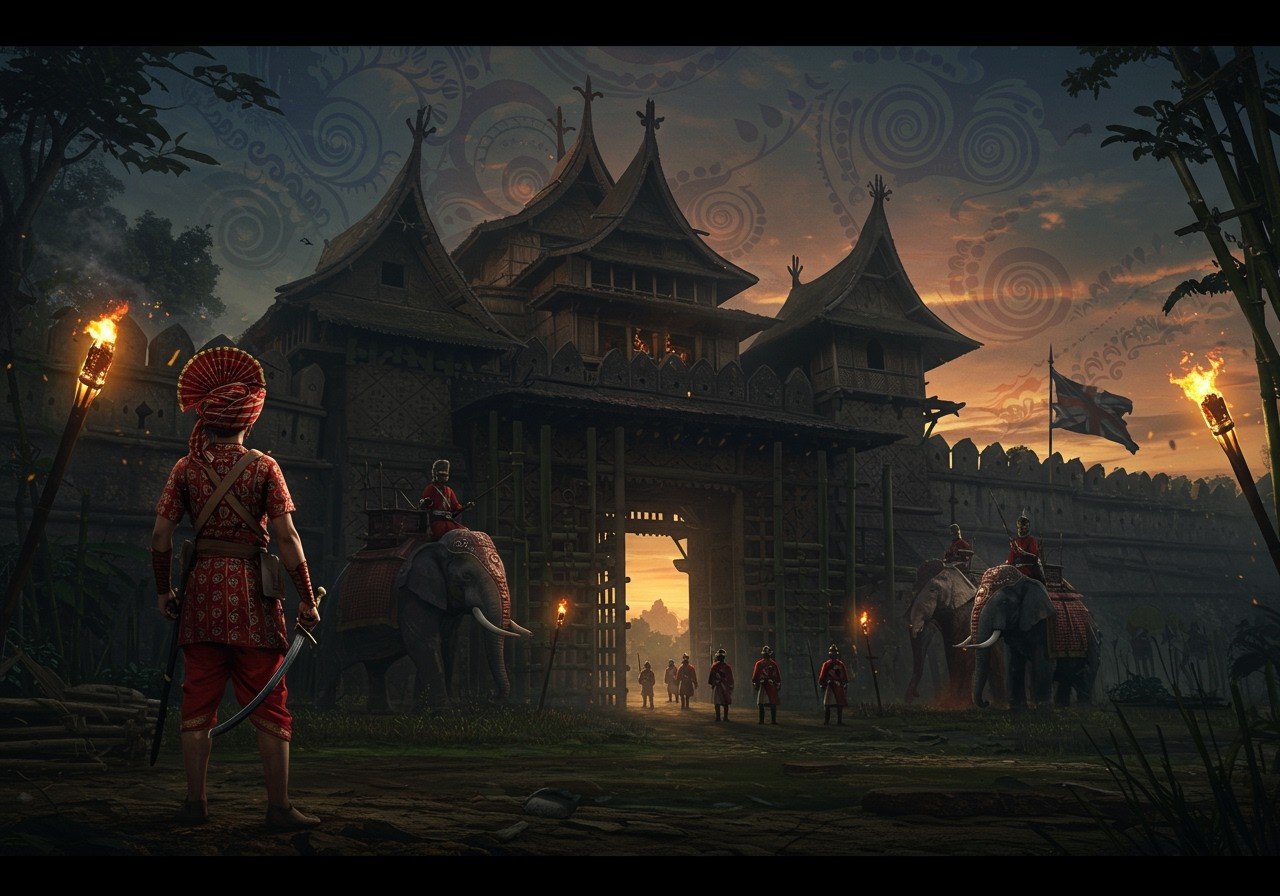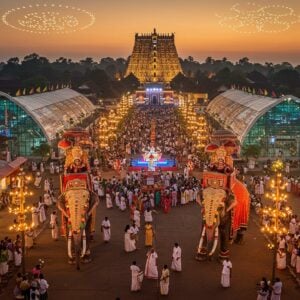
The Annexation of the Kachari Kingdom stands as a significant event in the annals of Indian history. It offers a glimpse into the complex interplay of power and culture in North-East India. By delving into this historical episode, we can gain a deeper understanding of the region’s rich and vibrant heritage. This blog post will serve as your guide, navigating through the origins, conflicts, and enduring legacy of the Kachari Kingdom.
Origins and Rise of the Kachari Kingdom
In the heart of present-day Assam and Nagaland, the Kachari Kingdom, also known as the Dimasa Kingdom, blossomed. Established by the Dimasa people, it became a cradle of culture and tradition. Temples stood as testaments to their devotion, while the arts flourished under the patronage of their rulers. The kingdom’s strategic location along vital trade routes elevated its importance in the political landscape of the region. A council of ministers and local chieftains formed the governing body, advising and supporting the monarchs. The rulers, driven by ambition and foresight, continuously strived to consolidate their power and expand their territorial reach. They understood the importance of a strong and unified kingdom.
The Ahom-Kachari Conflict
The rise of the Ahom Kingdom introduced an era of tension and conflict. The two kingdoms clashed, most notably in the Battle of Maibong, a turning point in their shared history. The Ahoms, eager to expand their influence, sought to annex Kachari lands for strategic and economic advantages. This struggle ultimately led to the Kacharis losing a degree of their political autonomy. Despite the backdrop of conflict, cultural exchanges continued to flow between the two kingdoms, subtly shaping the cultural fabric of the region. These interactions, though born from rivalry, left an indelible mark on the shared heritage of both kingdoms.
Annexation by the British
The arrival of the British East India Company marked a new chapter in the story of the Kachari Kingdom. The Company, with its expanding colonial ambitions, cast its gaze upon the strategically located and resource-rich kingdom. The plains of the kingdom fell under British control in 1832, followed by the hills in 1834, after the death of Raja Govinda Chandra Hasnu in 1830. This annexation, implemented under the Doctrine of Lapse, reshaped the political landscape of the region. Treaties were signed, military actions were undertaken, and the Kachari Kingdom became integrated into British India. This transition brought significant changes to local administration and cultural practices, leaving an enduring impact on the region’s trajectory.
Before British annexation, the kingdom encompassed parts of Nagaon, Karbi Anglong, North Cachar (Dima Hasao), Cachar, and the Jiri frontier of Manipur – a testament to its historical significance.
Cultural and Historical Legacy
Even today, the legacy of the Kachari Kingdom resonates strongly in North-East India. Kachari art, architecture, and religious practices continue to thrive in Assam and Nagaland. The Dimasa community plays a vital role as custodians of this rich heritage, ensuring that the traditions and customs of their ancestors are passed down through generations. The history of the Kachari Kingdom is deeply intertwined with the regional identity and cultural pride of the people. Festivals and cultural events serve as vibrant reminders of this shared past, keeping the spirit of the kingdom alive. Local literature and folklore are filled with stories and tales that echo the kingdom’s influence, enriching the cultural tapestry of the region. From ancient temples to vibrant festivals, the Kachari legacy is a testament to the enduring power of tradition and cultural resilience.
For those interested in exploring the rich history and culture of Assam, Poojn.in offers a curated selection of spiritual and ritual items. Discover our collection of Puja Kits and other traditional items to enhance your spiritual journey.
Reflecting on the Kachari Heritage
The history of the Kachari Kingdom is a powerful narrative of resilience, cultural exchange, and the enduring strength of tradition. Exploring this history fosters a deeper appreciation for the rich tapestry of North-East India’s heritage. The Kachari legacy lives on, woven into the fabric of every festival, every story, and every tradition that continues to flourish today. By embracing this history, we enrich our understanding and connection to the vibrant cultures of this region. Let us honor the Kachari spirit by celebrating and preserving its rich heritage for generations to come. It is a story that deserves to be told and retold.
Understanding the Annexation: Common Queries
Many seek to understand the complexities surrounding the annexation of the Kachari Kingdom. Some common questions arise:
What led to the British annexation of the Kachari Kingdom? The British East India Company, driven by a desire for territorial expansion and control over trade routes, annexed the Kachari Kingdom. This annexation followed the death of Raja Govinda Chandra Hasnu in 1830 and was executed under the Doctrine of Lapse, reflecting the Company’s strategic interests in the region.
Was there resistance to the annexation? Indeed, the Kachari people valiantly resisted the annexation, demonstrating their commitment to their sovereignty and cultural identity. However, they were ultimately overpowered by the superior military strength of the British forces. Their struggle stands as a testament to their courage and determination in the face of adversity.
Are there any vestiges of the Kachari Kingdom today? Absolutely. The historical footprint of the Kachari Kingdom remains visible in Assam today. Ancient temples, historical ruins, and vibrant cultural traditions stand as tangible reminders of the kingdom’s rich history. These remnants offer a glimpse into the past and serve as a source of pride for the people of the region.
Where can I find authentic puja items related to Kachari traditions? If you are looking for genuine puja items, Poojn.in offers a wide selection. We understand the importance of authenticity and quality in ritual items, and we are committed to providing our customers with the best products. Explore our range of products today.
What about incense for traditional ceremonies? Poojn.in also offers a diverse range of incense and dhoop, perfect for traditional ceremonies and everyday prayers. Discover our selection of Kushal Mangal Kasturi Puja Prayer Agarbatti and other fragrances to create a sacred atmosphere in your home.


